-
Machine learning week 9(Andrew Ng)
Recommender systems
1.Collaborative filtering
1.1 Making recommendations
Introduction
1.2 Using per-item features
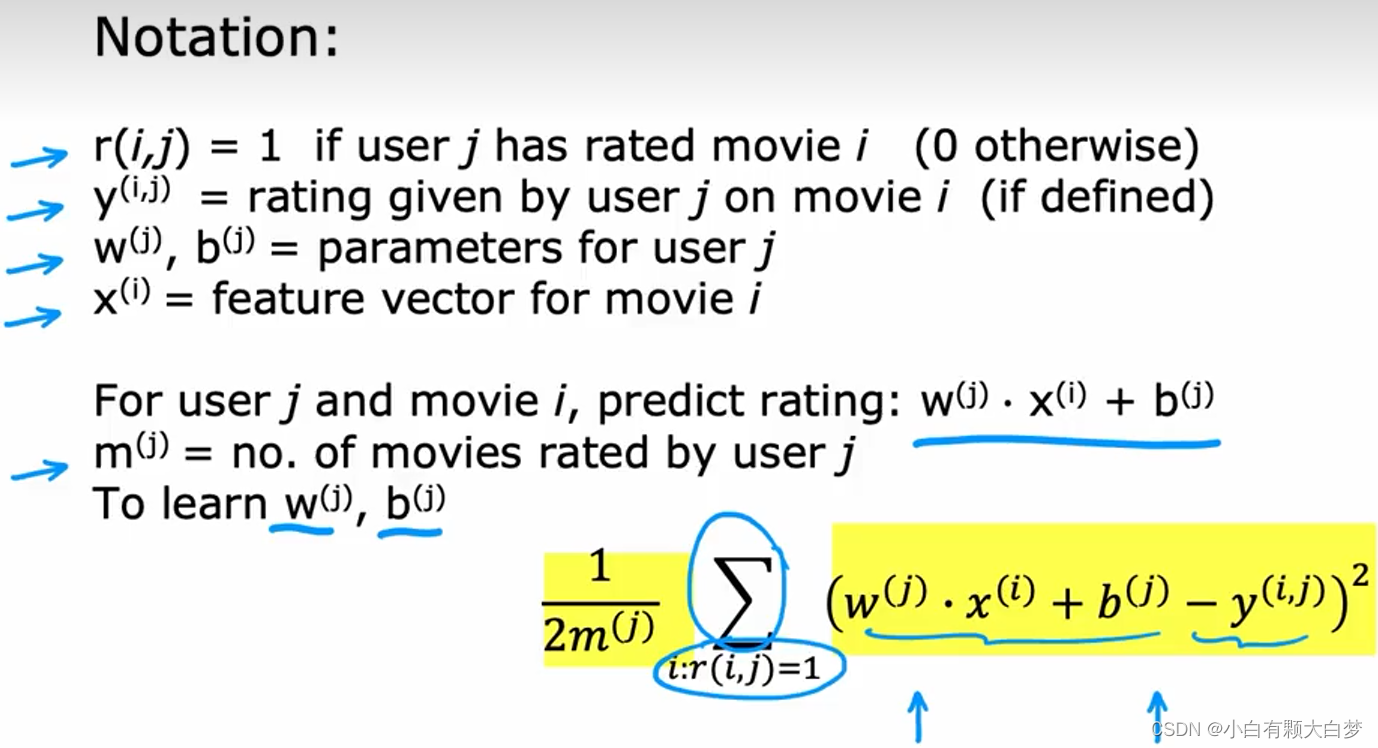
Cost function:
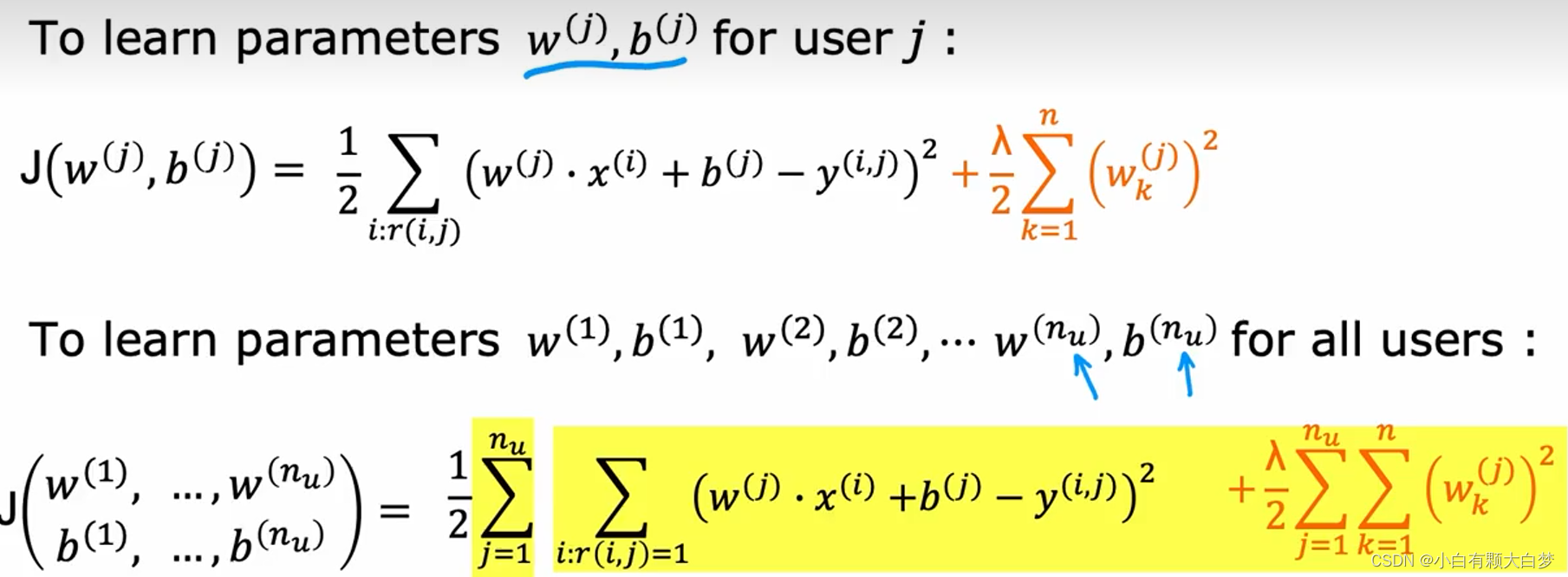
1.3 Collaborative Filtering algorithm
Predict x feature via the known parameters w w w and b b b

The cost function is similar to before.
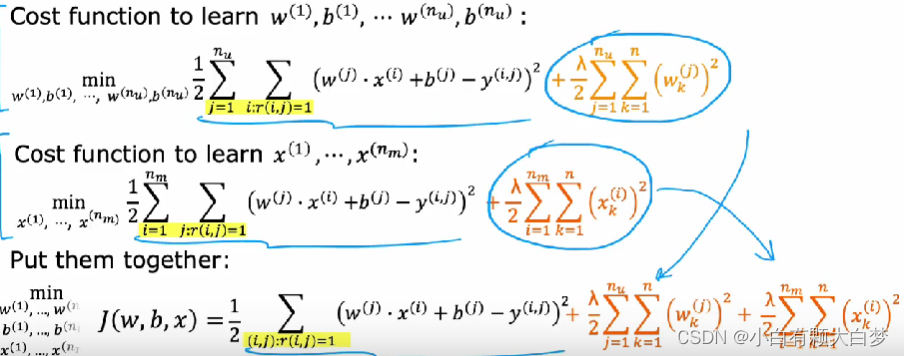
# Y (4778, 443) R (4778, 443) # X (443, 10) # W (443, 10) # b (1, 443) # num_features 10 # num_movies 4778 # num_users 443 def cofi_cost_func(X, W, b, Y, R, lambda_): """ Returns the cost for the content-based filtering Args: X (ndarray (num_movies,num_features)): matrix of item features W (ndarray (num_users,num_features)) : matrix of user parameters b (ndarray (1, num_users) : vector of user parameters Y (ndarray (num_movies,num_users) : matrix of user ratings of movies R (ndarray (num_movies,num_users) : matrix, where R(i, j) = 1 if the i-th movies was rated by the j-th user lambda_ (float): regularization parameter Returns: J (float) : Cost """ nm, nu = Y.shape J = 0 ### START CODE HERE ### for j in range(nu): w = W[j,:] b_j = b[0,j] for i in range(nm): x = X[i,:] J += R[i,j] * ((np.dot(w,x) + b_j - Y[i,j])**2) J /= 2 J += (lambda_ / 2) * (np.sum(np.square(W)) + np.sum(np.square(X))) ### END CODE HERE ### return J def cofi_cost_func_v(X, W, b, Y, R, lambda_): """ Returns the cost for the content-based filtering Vectorized for speed. Uses tensorflow operations to be compatible with custom training loop. Args: X (ndarray (num_movies,num_features)): matrix of item features W (ndarray (num_users,num_features)) : matrix of user parameters b (ndarray (1, num_users) : vector of user parameters Y (ndarray (num_movies,num_users) : matrix of user ratings of movies R (ndarray (num_movies,num_users) : matrix, where R(i, j) = 1 if the i-th movies was rated by the j-th user lambda_ (float): regularization parameter Returns: J (float) : Cost """ j = (tf.linalg.matmul(X, tf.transpose(W)) + b - Y)*R J = 0.5 * tf.reduce_sum(j**2) + (lambda_/2) * (tf.reduce_sum(X**2) + tf.reduce_sum(W**2)) return J- 1
- 2
- 3
- 4
- 5
- 6
- 7
- 8
- 9
- 10
- 11
- 12
- 13
- 14
- 15
- 16
- 17
- 18
- 19
- 20
- 21
- 22
- 23
- 24
- 25
- 26
- 27
- 28
- 29
- 30
- 31
- 32
- 33
- 34
- 35
- 36
- 37
- 38
- 39
- 40
- 41
- 42
- 43
- 44
- 45
- 46
- 47
- 48
- 49
- 50
- 51
- 52
- 53
1.4.Binary labels: favs, likes and clicks
Judge whether the customer likes it(Binary labels)

1.5.Mean normalization

And in fact, the effect of this algorithm is it will cause the initial guesses for the new user Eve to be just equal to the mean of whatever other users have rated these five movies. And that seems more reasonable to take the average rating of the movies rather than to guess that all the ratings by Eve will be zero.1.6.TensorFlow
1.7.Finding related items
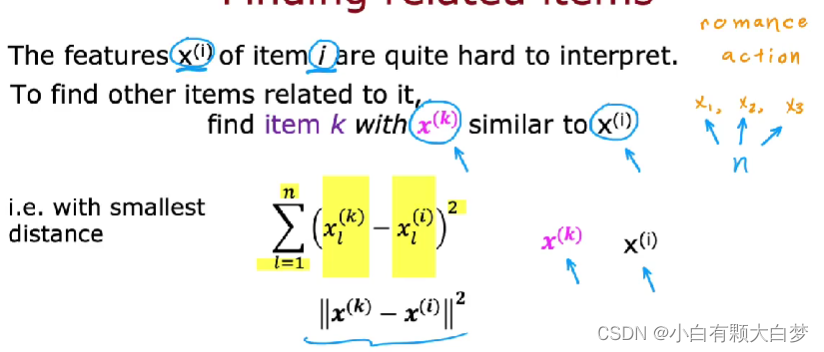
2. Content-based filtering
2.1. Collaborative filtering vs Content-based filtering

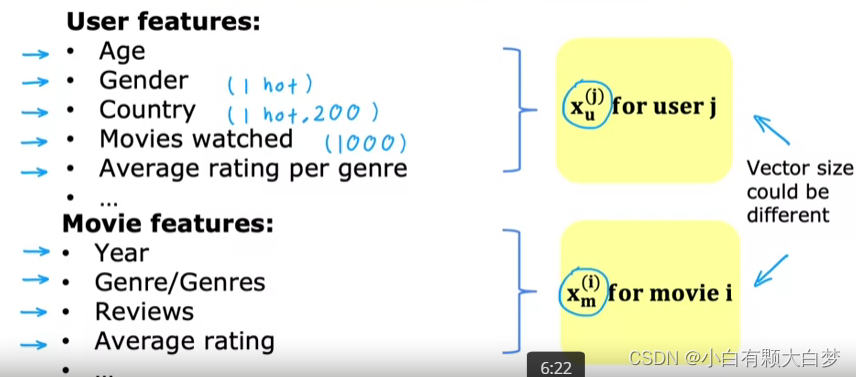
Our purpose is to predict the value, so we should transform the features of users and movies to vector v u , v m v_u,v_m vu,vm, which have the same dimension.
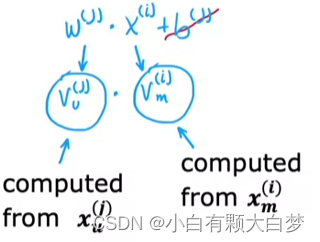
2.2. Deep learning for content-based filtering

Both of them have 32 numbers although x u x_u xu and x m x_m xm are different.
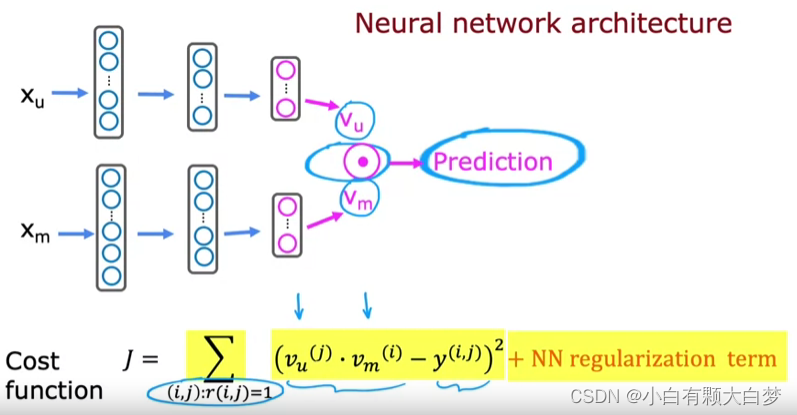
And ∣ ∣ v m ( k ) − v m ( i ) ∣ ∣ m i n 2 ||v_m^{(k)}-v_m^{(i)}||^2_{min} ∣∣vm(k)−vm(i)∣∣min2 is the most similar movie to movie i i i.2.3. Recommending from a large catalog
When the catalog is too large, thousands of millions of times every time a user shows up on your website becomes computationally infeasible. So, we should prepare before.
Having precomputed the most similar movies to every movie, we can just pull up the results using a look-up table. And then we can retrieval and rank

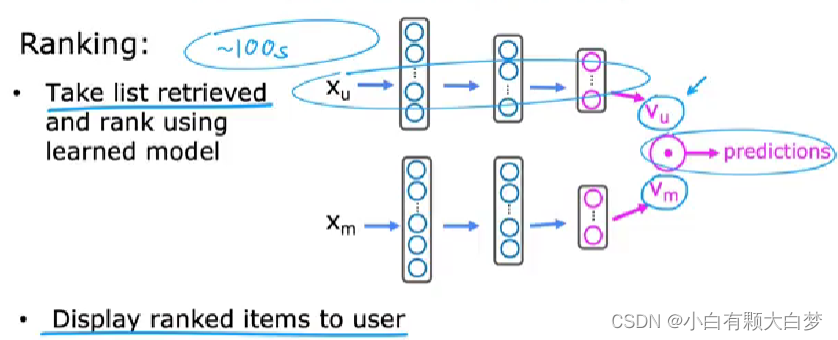
Rank them by the prediction value from high to low. -
相关阅读:
成都建筑模板批发市场在哪?
【目标检测】Object Detection in 20 Years: A Survey
机器学习 泰坦尼克号——灾难中的机器学习
面试中的MySQL主从复制|手撕MySQL|对线面试官
10 款更先进的开源命令行工具
Kafka 安装教程和基本操作
微服务轰炸中:RPC+Dubbo+SpirngBoot+SpringCloud Alibaba+Docker+K8s!
猿创征文|机器学习实战(8)——随机森林
【VSCode】解决Open in browser无效
LeetCode(力扣)968. 监控二叉树Python
- 原文地址:https://blog.csdn.net/weixin_62012485/article/details/126581928
